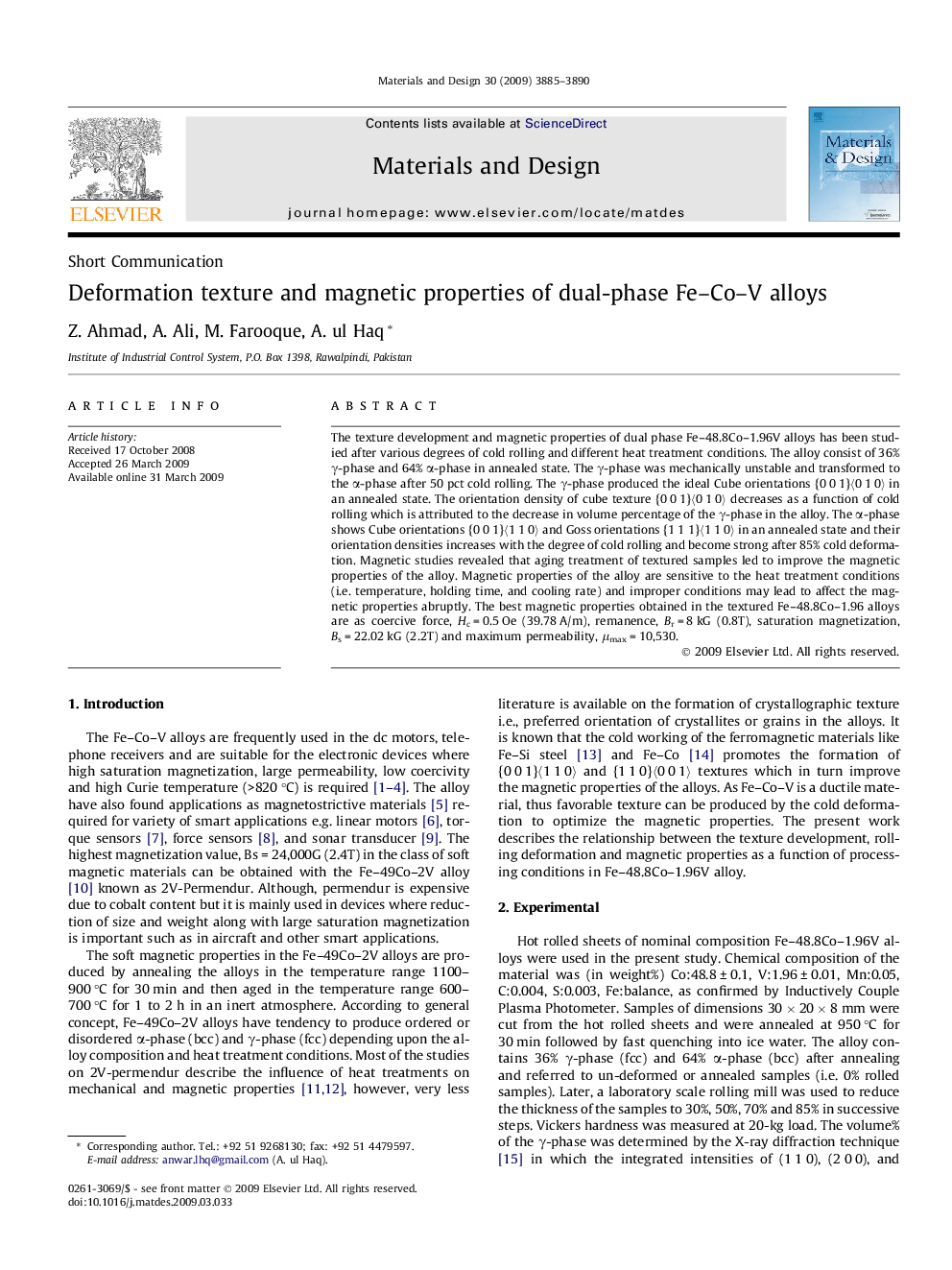| Article ID | Journal | Published Year | Pages | File Type |
|---|---|---|---|---|
| 832689 | Materials & Design (1980-2015) | 2009 | 6 Pages |
The texture development and magnetic properties of dual phase Fe–48.8Co–1.96V alloys has been studied after various degrees of cold rolling and different heat treatment conditions. The alloy consist of 36% γ-phase and 64% α-phase in annealed state. The γ-phase was mechanically unstable and transformed to the α-phase after 50 pct cold rolling. The γ-phase produced the ideal Cube orientations {0 0 1}〈0 1 0〉 in an annealed state. The orientation density of cube texture {0 0 1}〈0 1 0〉 decreases as a function of cold rolling which is attributed to the decrease in volume percentage of the γ-phase in the alloy. The α-phase shows Cube orientations {0 0 1}〈1 1 0〉 and Goss orientations {1 1 1}〈1 1 0〉 in an annealed state and their orientation densities increases with the degree of cold rolling and become strong after 85% cold deformation. Magnetic studies revealed that aging treatment of textured samples led to improve the magnetic properties of the alloy. Magnetic properties of the alloy are sensitive to the heat treatment conditions (i.e. temperature, holding time, and cooling rate) and improper conditions may lead to affect the magnetic properties abruptly. The best magnetic properties obtained in the textured Fe–48.8Co–1.96 alloys are as coercive force, Hc = 0.5 Oe (39.78 A/m), remanence, Br = 8 kG (0.8T), saturation magnetization, Bs = 22.02 kG (2.2T) and maximum permeability, μmax = 10,530.
